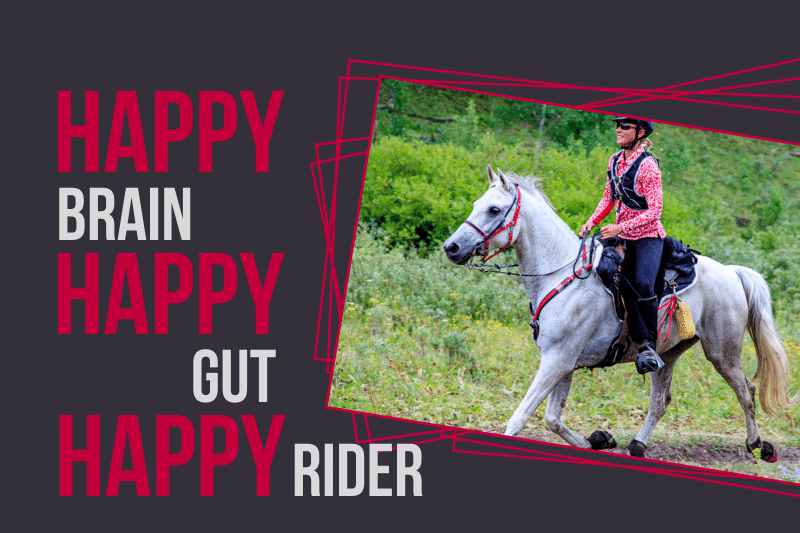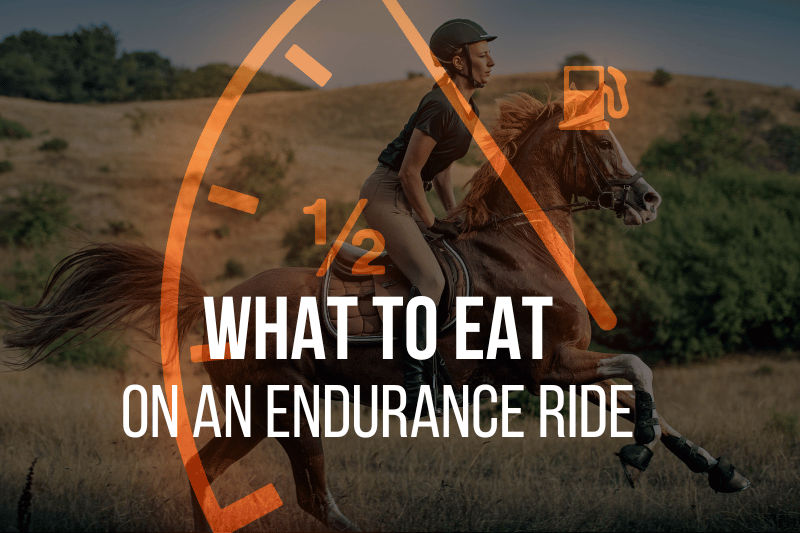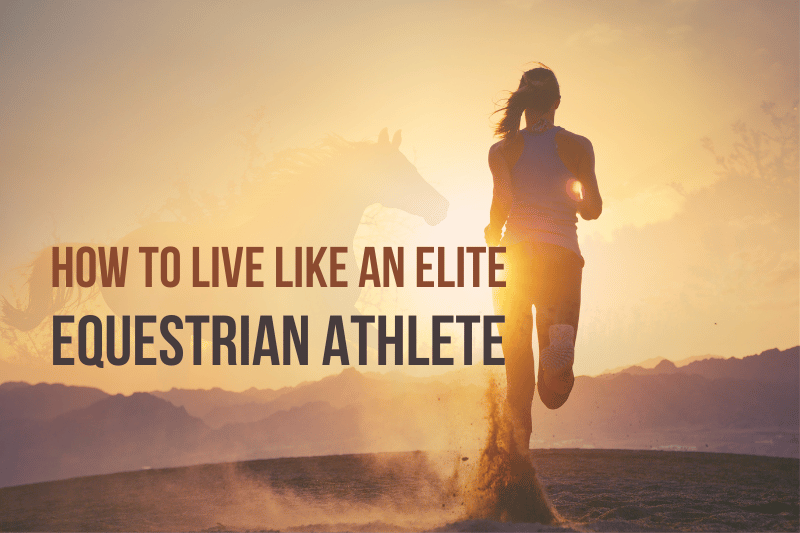To succeed in any endurance sport, athletes need to manage their two most challenging organs: brains and guts. Equestrian endurance riding is no exception. In a webinar on February 15, 2024, coach Greg McMillan shared key principles for success on race day.
McMillan’s talk was titled Unlock Your Marathon Potential. He’s a champion runner and running coach, after all. I listened in partly to pick up tips for my own running, but mostly to see how what he had to say would apply to equestrian endurance riders…and I wasn’t disappointed!
As a running coach, McMillan has worked with scores of first-time marathoners, over 18,000 Boston Marathon qualifiers, and international competitors. He observed that although training strategies are always tailored to individuals, some principles apply across the board – from the front of the pack to the back, and across all different types of endurance sport.
Here are my notes from the sections of Greg McMillan’s talk that apply most directly to endurance riders:
Happy Brain Training for Endurance Riders
Our brains have a massive amount of influence on our bodies. When they feel threatened (such as by the sense of suffering that comes with endurance exercise, including distance riding), our brains sent fatigue signals to our bodies.
This makes sense, right? Evolutionarily speaking, our brains are not interested in completing endurance events; they are interested in keeping us alive. However, we need to train our brains to respond differently to suffering if we are to perform well over the miles.
Our brains get more comfortable with (appropriate) suffering through consistent exposure to challenging experiences.
McMillan suggests that we endurance athletes gradually increase our exposure to suffering. One to three weekly exposures to hard effort will get our brains familiar with discomfort, and we will accept the fact that we can operate in a fatigued state.
With consistent reminders, our brains will stop sending frantic “stop” signals to the body when the going gets rough. As a result, we’ll be able to perform at a higher level for longer periods.
How Can Endurance Riders Apply Happy Brain Training?
Stepping away from McMillan’s presentation for a moment, let’s ponder how endurance riders might apply this.
While runners can adjust to suffering by running longer and more consistently, it’s obviously not necessary (or recommended) for us to do 50- or 100 –mile conditioning rides. We never ride anywhere near that long until we’re in competition, so how can we train our brains to handle it?
Option 1: Participate in some endurance exercise of our own, without horses. Training for a half marathon, or maybe a 50K cycling race or a triathlon, will definitely expose our brains to suffering in a way that transfers to endurance riding. If you’re just starting out, you can get the same benefit from training for something like a 5K fun run!
Option 2: Ride in a tired body. Saddle up and go for a conditioning ride after a long day at work on too little sleep. Or, do a tough workout of your own before heading out to the barn. Or, spend all weekend doing farm chores and training horses, then catch your endurance horse for his weekly long ride.
Remember, at least one suffer-fest per week is ideal. The goal is to consistently expose your brain to the idea that you can still perform well even when you’d rather hit the sofa with a stuffed-crust DiGiorno.
As McMillan says, “Suffering isn’t a bad thing – it’s just something we need to be able to deal with.”
Happy Gut Training for Endurance Riders
McMillan also emphasized the importance of happy guts for endurance athletes.
Any sport that requires us to maintain physical effort for many hours has a tendency to result in gastrointestinal discomfort ranging from nausea to vomiting to diarrhea. Obviously, none of these things contribute to a successful ride, so we are wise to learn what solutions work for us well before competition day.
Our guts actually change throughout endurance events. This is why the fuel that works and tastes good early on may turn your stomach later in the day. Often, what we’re experiencing is something McMillan called “fast-acting sugar fatigue.”
The brain understands stable blood glucose as a safety signal. No need to panic, folks! We have fuel on board. Conversely, repeatedly flooding our bloodstream with simple carbohydrates results in blood glucose spikes and crashes. This makes our brains very unhappy — and they share this feeling with our guts.
Fortunately, endurance riders tend to have a few more options than marathon runners do. Our level of physical effort is less intense, and we have greater ability to carry food with us. Still, as the miles and hours drag on, it’s common for us to experience negative gastrointestinal symptoms.
McMillan recommends that endurance athletes experiment with fuels in a variety of forms. Fluids, gels, and solids are all valid options, and we need to learn what works for us at different stages of an event. We need to practice fueling for happy guts, just as we need to practice suffering for happy brains.
Happy Gut Recommendations for Endurance Riders
For runners, McMillan suggests taking in a small amount of fuel every 45 minutes to an hour. While many endurance riders don’t need to take in calories that often, some find that doing so works very well. I find that about 100 calories every couple hours of riding is a good rate for me.
As for what kind of fuel to use, remember that we want to avoid repeated blood sugar spikes and crashes. The solution that works best for me as both a half-marathoner and an endurance rider is made by UCAN.
UCAN’s sports nutrition products feature a unique carbohydrate that breaks down more slowly than traditional energy products. Called Livsteady, this carbohydrate is a starch treated with heat, pressure, and water. It is consistently easy on my stomach even when I’m working hard over many hours in the heat.
My recommendations for endurance riders include:
Salted Peanut Butter Energy Bars – These taste amazing and won’t melt in your saddle bags. I use them before long runs or conditioning rides, and as snacks during holds at endurance races.
Energy Powder – Available in both packets and tubs, this is the most cost-efficient form of Livsteady. I like to mix it into one of my water bottles for sipping throughout an endurance ride. I also use it at home when I need a light-on-the-stomach boost between gym and saddle.
Energy Gel — These energy gels are an efficient way to carry steady-energy fuel that’s perfect for a touchy stomach. They are my go-to for half marathons, and I also carry a couple in my self-rescue pack when trail riding alone. The pineapple flavor is my favorite.
Protein Plus Energy Powder – This is a fabulous ride-day breakfast if you’re too nervous or rushed to eat. It contains both Livsteady and protein, and I’m here to tell you that the cookies and cream flavor is delicious. At home, I blend it with Greek yogurt and almond milk to make smoothies.
Last year, I asked UCAN to help me get Livsteady into the hands of my fellow endurance riders because it had proven so helpful for me. They said yes, which means I can offer you this link to get the best deal on anything in their store. You’ll get a minimum of 10% off, and more if there happens to be a better special underway.
Be sure to use my link so they know I sent you!
Are you ready to level up your endurance? Be tough on your brain and easy on your gut.
You might also like
This post includes affiliate links, and I may earn a small commission (at no extra cost to you) when you purchase through these links. I only recommend products and services I think are helpful and useful. Thanks for helping me offset the cost of maintaining this blog as a free resource!



